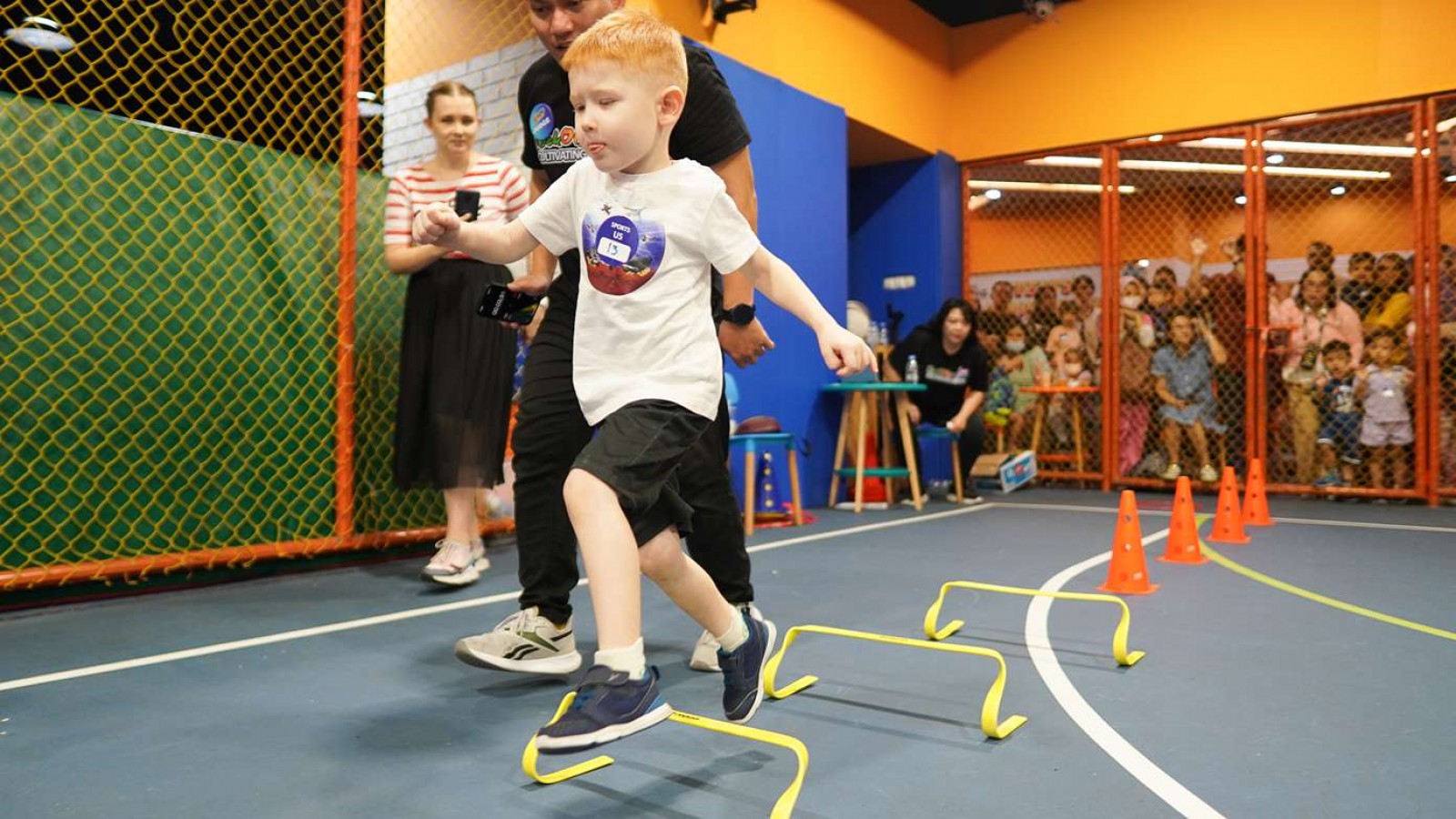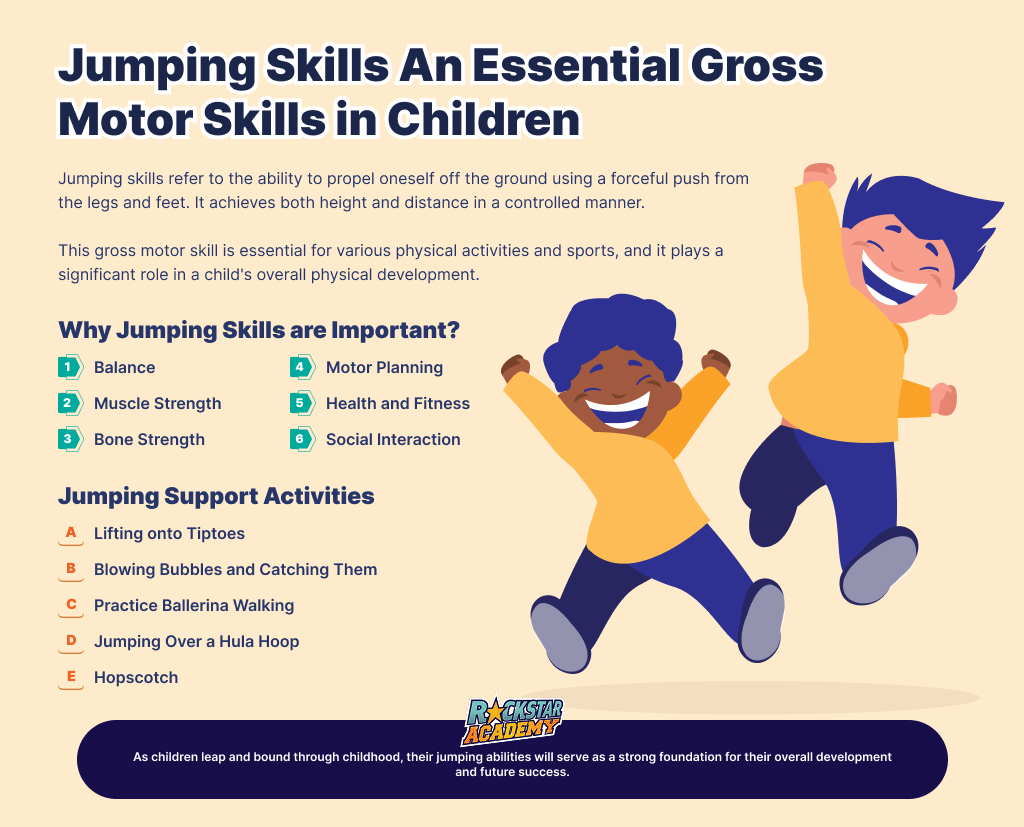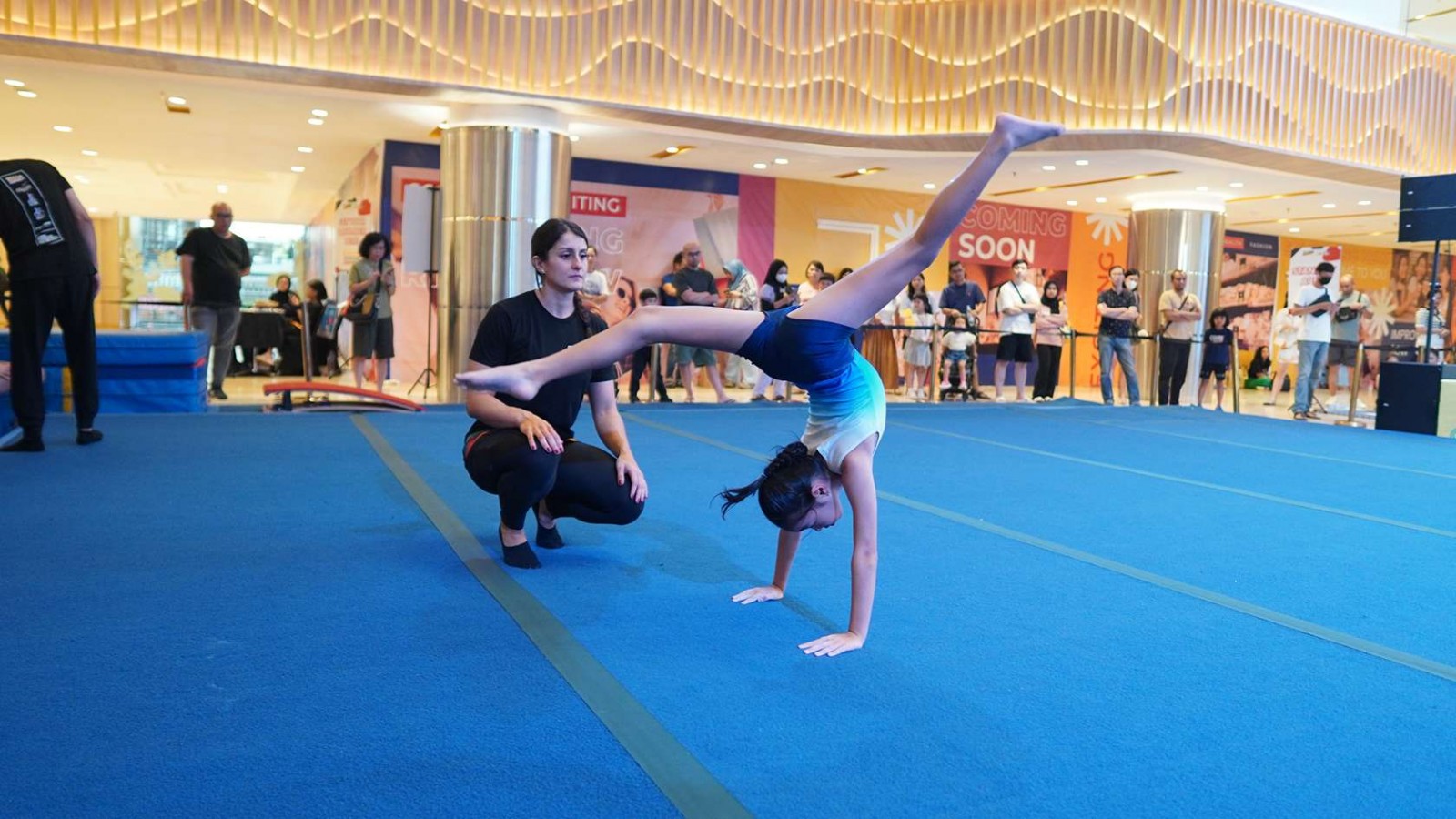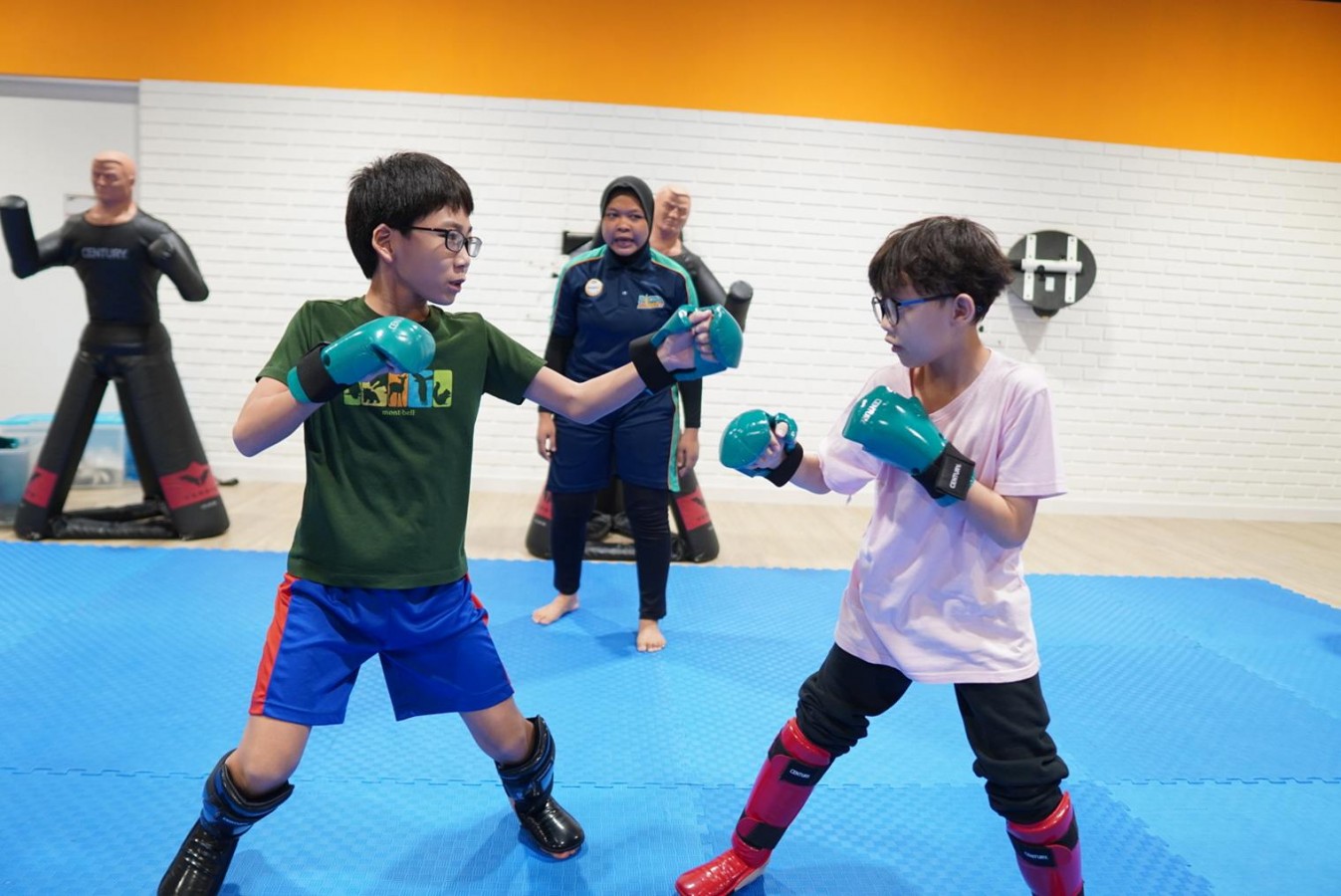Jumping Skills An Essential Gross Motor Skills in Children

Gross motor skills are crucial for children's physical development, and among these, jumping skills stand out as an essential component that significantly contributes to a child's physical and cognitive growth.
Jumping skills also play a crucial role in their social and emotional development. In this article, we will explore the importance of jumping skills in children, how they develop, and ways to enhance these skills effectively.
What are Jumping Skills?
Jumping skills refer to the ability to propel oneself off the ground using a forceful push from the legs and feet. It achieves both height and distance in a controlled manner.
This gross motor skill is essential for various physical activities and sports, and it plays a significant role in a child's overall physical development.
Why Jumping Skills are Important?
Jumping skills are an essential component of a child's physical development and overall well-being. These skills go beyond mere play and are fundamental to various aspects of growth, health, and learning. Here are several reasons why jumping skills are important:
1. Balance
Mastering jumping requires maintaining equilibrium while propelling oneself off the ground and landing safely. This enhances proprioception, the body's awareness of its position in space which is crucial for daily activities and sports.
2. Muscle Strength
Jumping engages major muscle groups like the legs, core, and even upper body, promoting muscular development and endurance. Strong muscles support overall physical health and contribute to better posture and movement control.
3. Bone Strength
Weight-bearing activities such as jumping help build bone density, essential for skeletal health and reducing the risk of conditions like osteoporosis later in life.
It strengthens bones by subjecting them to mild stress, prompting them to become stronger over time.
4. Motor Planning
Jumping involves complex motor planning, requiring coordination between muscles, timing of movements, and spatial awareness.
Practicing jumping enhances these cognitive skills, which are vital for tasks requiring precise movements and adaptations to different environments.
5. Health and Fitness
Regular participation in jumping activities improves cardiovascular fitness, stamina, and overall physical conditioning. It promotes a healthy lifestyle from a young age, reducing the likelihood of obesity and related health issues.
6. Social Interaction
Jumping often occurs in group settings, fostering social skills like turn-taking, cooperation, and communication.
Participating in games and activities involving jumping encourages teamwork and builds relationships among peers, promoting emotional well-being.
When Can Children Develop Jumping Skills?
Children generally begin developing jumping skills around 16 to 18 months of age, when they are already walking, climbing onto furniture, and navigating stairs with assistance. Initially, they start by jumping in place, barely lifting their feet off the ground.
As they progress, they learn to jump off low objects such as stairs or curbs, landing on both feet. Over time, they advance to jumping over objects, hopping forward, and eventually mastering the ability to hop on one foot.
This gradual progression reflects their increasing coordination, strength, and confidence in mastering this fundamental gross motor skill.
Signs You May See If Your Child is Having Trouble Jumping
If your child is experiencing difficulties with jumping, there are several signs to watch for. By the age of 2.5 to 3 years old, children typically begin jumping, so not showing interest or ability in jumping by this age could indicate a delay.
If they struggle to get off the floor when attempting to jump or show fear of jumping off low heights like steps, it may suggest issues with coordination or balance. Jumping predominantly on one side or having difficulty stopping after a jump could indicate muscular or coordination challenges.
Fear of jumping across heights by ages 3 to 4 or frequently falling over during attempts may also signal underlying issues that could benefit from assessment or guidance from a pediatrician or physical therapist. Early identification and support can help address any potential developmental delays or concerns effectively.
Jumping Support Activities
To support children in developing their jumping skills, various activities can be incorporated into daily routines and play. These activities not only encourage physical development but also promote coordination, balance, and confidence in mastering this essential gross motor skill. Here are some effective activities:
A. Lifting onto Tiptoes
Encouraging children to lift onto their tiptoes helps strengthen the calf muscles and improves balance, which are essential for jumping.
B. Blowing Bubbles and Catching Them
This activity not only enhances hand-eye coordination but also encourages children to jump and reach for the bubbles. It can help in promoting vertical jumping skills.
C. Practice Ballerina Walking
Walking on tiptoes like a ballerina helps develop ankle strength and balance, preparing children for more controlled and graceful jumps.
D. Jumping Over a Hula Hoop
Placing a hula hoop on the ground and encouraging children to jump over it helps them practice jumping for distance and height. This activity helps to improve their jumping technique and spatial awareness.
E. Hopscotch
Playing hopscotch involves jumping in various patterns and directions, which enhances coordination, balance, and agility. It's a fun way to practice different types of jumps and movements.
How to Encourage Child to Jump
To encourage your child to jump, there are several effective strategies you can use. Strengthening their legs can be achieved by encouraging activities like walking on their toes or squatting to play, which build muscles essential for jumping.
You can assist them in learning to jump by holding their hands and gently lifting them as they squat, gradually helping them understand the motion and timing of a jump.
Providing soft surfaces such as mattresses or trampolines offers a safe environment where they can practice jumping without fear of injury. This also allows them to gain confidence and improve their skills over time.
These supportive approaches not only enhance physical development but also make jumping a fun and engaging activity for young children.
Laying the Foundation for Broader Motor Skills!
As children leap and bound through childhood, their jumping abilities will serve as a strong foundation for their overall development and future success.
To help you, make sure to experience the transformative benefits of physical education and diverse activities at Rockstar Academy, a premier Sports & Performing Arts Academy.
Our Multi-sports class offers a dynamic blend of athletic training and team-building exercises that enhance coordination, agility, and social skills. Through structured sessions led by experienced coaches, children explore various sports disciplines, fostering a love for physical activity in a supportive environment.
Additionally, our multi-sports program at Rockstar Academy also offers students the thrilling opportunity to participate in the RockOlympics. For parents, the RockOlympics is an incredibly rewarding and satisfying event, providing the perfect opportunity to witness the progress and achievements of their beloved children.
As part of our commitment to fostering a love for sports and physical education, Rockstar Academy invites you to experience our Multi-sports program with a complimentary free trial.
Don't miss this opportunity to discover how Rockstar Academy can inspire your child to excel both athletically and creatively. Sign up today and let your child embark on a journey of growth, achievement, and fun through our Multi-sports program!

FAQ
What is jumping in motor skills?
Jumping is a fundamental gross motor skill that involves propelling the body off the ground using the muscles in the legs. It requires strength, coordination, balance, and spatial awareness.
How do you teach jumping skills?
Teach jumping skills by starting with basic movements like jumping in place, gradually progressing to jumping over obstacles or from low heights. Use demonstrations, encouragement, and provide a safe environment for practice.



